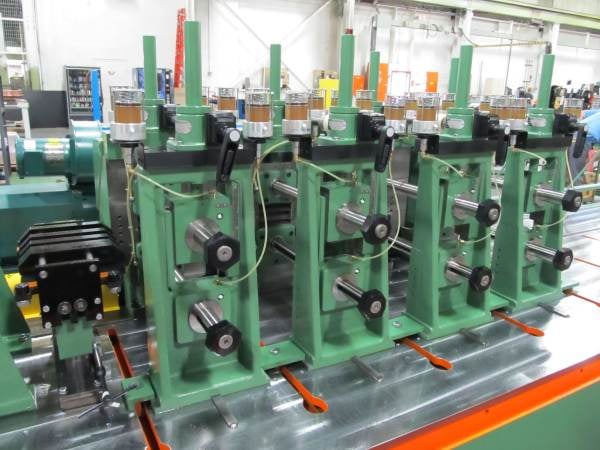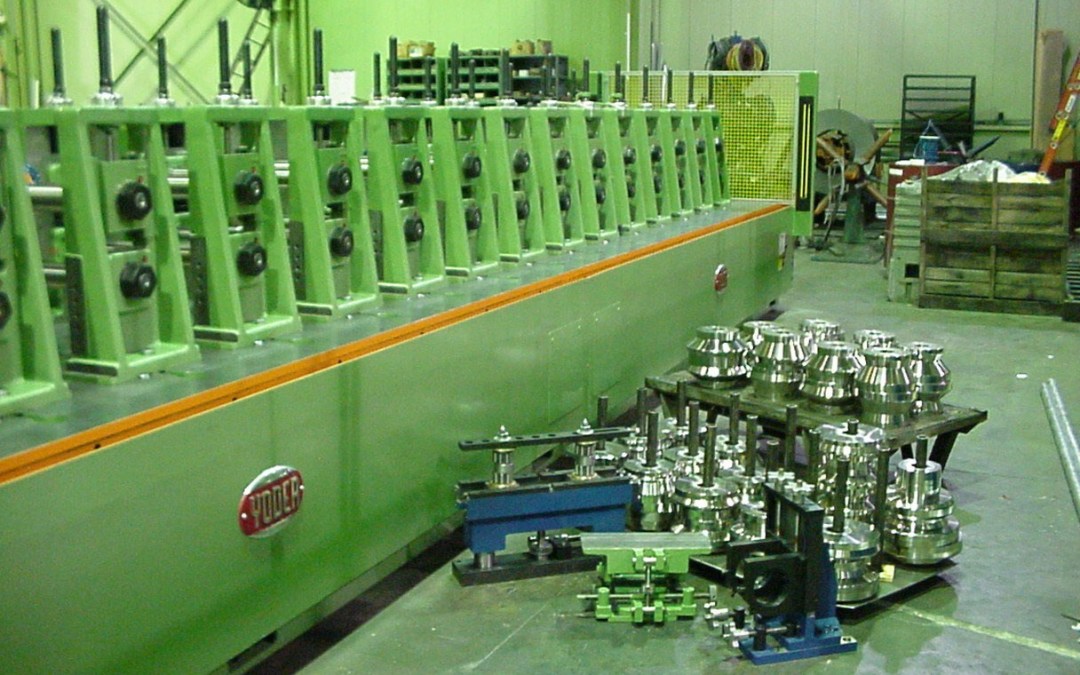While the use of a laser is becoming more and more common for roll forming mill alignment, the laser still requires human intervention. The laser will allow the mill to be accurately aligned within ±.0005”. The laser allows tighter alignment compared to the manual process.
Is there any advantage to laser aligning my mill over the old manual method? Depending on the application, YES. Using a laser does take some practice. A person who misuses the laser to align the mill can miss up to .025”. Not every company is willing to spend approximately $4,000 for a laser alignment system and the time to train personnel in the operation of the system.
A laser is extremely helpful in the areas of high tolerance roll forming for such products as drawer slides, seat tracks and other rail type products. Companies in these industries typically work to tolerances of ±.005” and mill alignment becomes critical. Other industries find it just as effective to use the traditional method of checking each stand.
Bucking in the Laser
First, the base must be level before attempting to use the laser. Shafts must be parallel and set to the acceptable height before starting laser alignment. Paralleling remains a manual procedure. The first pass and the last pass top and bottom shaft must have a shoulder setting of 0.00”, using the v-block with dial indicator. This is now your “zero reference point”.
Affix the laser target to the bottom shaft on the first pass. Adjust the bubble target to center. The laser sending unit has two bubble levels that also must be set to center by using the coarse adjustment knobs.
Now that the sending unit and target are level, turn on laser unit. The “red on target light” should be illuminated. If not, adjust the vertical with the lever on the blue tube. When the “on target light” is on the vertical, it must read .030” or less and the horizontal .000”. To bring in horizontal to 0.000”, use the horizontal micrometer cross slide adjustment.
Now, move the laser target to the last pass bottom shaft and again bubble align the target to center. The “red on target” light should be illuminated. If not, adjust the horizontal with the coarse adjustment knob. The vertical should still show .030” or less and the horizontal is .000”.
Return the laser target to the first pass bottom shaft and check horizontal reading if it is not .000”. Adjust horizontal to read .000” and again repeat this several times until the alignment from end to end is the identical horizontal reading of .000”.
Now that end-to-end is zero, the laser target must be checked for true centerline calibration. Place laser target on the “zero reference point” shaft, which is the first pass bottom. The horizontal reading should be .000”. Invert target and place it on top shaft which should also be .000”. If it is not, you must calibrate the laser target. This can be done by adjusting the set screws on the side of the laser target. Repeat the “bucking in procedure”. This will guarantee accurate end-to-end and pass-to-pass readings.
The laser is now “bucked” in and ready to shoot the entire bottom shafts. Start at the first pass and finish at the last pass and record all the settings. When all the bottom readings are recorded, move target to the first top pass. The target must be inverted and the horizontal reading should be opposite of the bottom. Continue taking readings from top pass to top pass remembering to bubble align the laser target each time you move it from pass to pass.

Critical System Alignment
System alignments are critical upon installation. Most original equipment manufacturers will supply a foundation bolt plan, which places the equipment in-line based on the centerline of the operation in the mill. However, it is important to know whether your system is set up as a back edge operation or centerline operation.
Back edge refers to the reference point being your shoulders of your mill or back edge. Centerline operation refers to the centerline of the roll space of the mill. Once this is established, the entry and exit equipment is set accordingly. The use of a string or piano wire is still very common. This is true since you typically have enough adjustment to account for equipment that is not as accurate as your mill.
The Importance of Mill Alignment
It takes three things to make a quality part:
- Well-designed and tested tooling.
- Quality material being formed.
- A quality mill that is properly aligned.
By using these three elements, you can place your company in a position to produce quality product day in and day out. Items #1 and #2 take effort in the up front planning process for a product. Item #3 requires the operations personnel to take the time and effort to keep the equipment in first class operating condition.



